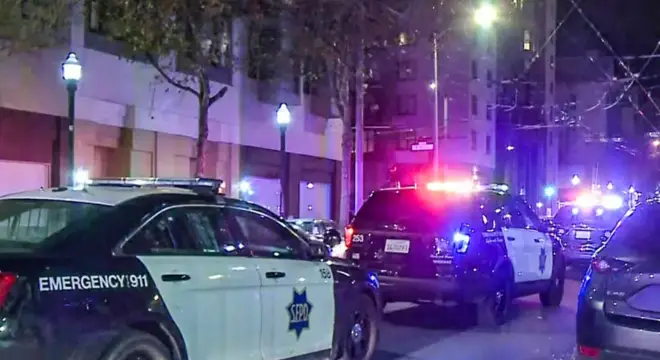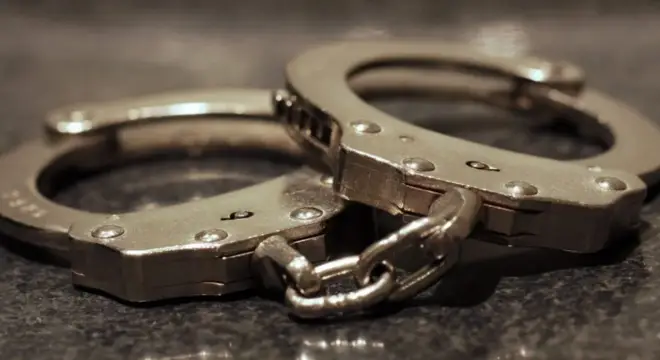Geauga County Home Explosion Leaves Two Injured, Officials Investigating
When I first read what happened on Hart Road that afternoon, the timeline hit me harder than anything else. You expect explosions to be sudden, random, unpredictable — but this one unfolded in a matter of minutes, and every second added to the damage.
Around 2:40 p.m., Montville Fire got the call. A “structure fire,” nothing more. If you’ve ever worked around emergency calls, you know how that phrase can mean anything from a kitchen mishap to a life-changing disaster.
But by the time Hambden Fire arrived — just a few minutes later — the home was already fully engulfed. That detail tells you a lot. Fire doesn’t move that fast unless something violent kicked it off.
When Chief Ron Jonovich pulled up, flames were pushing out of every opening in the structure. One entire wall had been blown off. Windows gone. The back of the house barely recognizable. You don’t need to be an investigator to understand what kind of force tears a home apart like that — you just need to stand in front of a structure that’s no longer standing.
For anyone trying to understand the scope of this explosion, this moment is important. It shows how fast things escalated, how little time anyone had to react, and why the injuries that followed were so severe.
If you were the first person on this scene, what’s the first thing you think you’d notice — the flames, the destruction, or the silence right after the blast?
The Victims: A Firefighter, His Daughters, and the Moment Everything Changed

What stayed with me most wasn’t the damage to the house — it was the moment Chief Jonovich realized the person injured inside wasn’t just a resident. He was one of their own. A Hambden firefighter. A father.
According to News5Cleveland, the firefighter had been inside the house with his two daughters when the explosion tore through the structure. He suffered severe burns on his arms and legs. The kind you don’t shake off. The kind that stay with you long after the flames are out.
Paramedics moved fast — first to University Hospital, then straight into Life Flight to Metro. When burn injuries reach that level, minutes matter. And you can feel that urgency in every detail.
One of his daughters was burned too — her hands, her legs, even parts of her hair. That image alone tells you how close she was to the blast. She was taken directly to Metro for treatment. The second daughter wasn’t physically hurt, but standing next to your burning home, watching your father and sister leave in ambulances… that leaves a different kind of mark.
The chief said the injuries’ severity isn’t fully known yet. Anyone who’s followed burn cases knows recovery isn’t measured in days. It’s measured in surgeries, in physical therapy, in emotional weight.
And when the chief was asked what it felt like treating one of his own, he said it was “disbelief.” I get that. In every fire department family, you expect danger — but you never expect the danger to come home.
What Caused the Explosion: Early Clues From Inside the House
Investigators haven’t released an official cause yet, but they’re confident propane was involved. If you’ve ever worked with or around propane, you know how unforgiving it is. One spark is enough.
What struck me was the detail from the firefighter’s daughter. She said he was downstairs working on the furnace. Something sparked. Then it ignited. Then the entire house blew. That moment — from a routine repair to an explosion — is the part we often overlook. Most of us don’t think twice about what’s happening behind the walls of our homes until something goes wrong.
Right now, the Geauga County Fire Investigation Unit and the State Fire Marshal are handling the case. And to be honest, that level of oversight tells you something: explosions aren’t treated as “just another fire.” They dig into every valve, every line, every possible ignition point.
That process takes time. And while the cause seems obvious, investigators never rely solely on what it “seems like.” They need proof. They need a sequence. They need to understand exactly what failed so other families don’t end up in the same situation.
The Loss: A Destroyed Home, Missing Pets, and the Weight of Aftermath
When the chief said the house was a total loss, he meant it literally. There’s nothing left to salvage. Not clothes. Not furniture. Not memories stored in boxes in the basement. Everything that family owned — gone in a matter of seconds.
But the detail that hurt most? The dogs.
The department was told there were two inside. They found one dead. They’re still looking for the other. If you’ve ever had pets, you know they’re not “just animals.” They’re family. Losing a home is devastating. Losing a pet inside that home adds a pain that’s hard to explain unless you’ve lived it.
This section is where most reports stop. “Home destroyed.” “Pets lost.” But if you’ve ever talked to a family after a fire, you know the loss doesn’t end when the flames go out.
There’s the shock. There’s the smell of smoke that stays on your clothes. There’s the feeling of having nowhere to return to.
And for this family, all of that hit at the same time.
Stories like this remind me of other devastating incidents, like a recent house fire in Indiana that left a home destroyed but thankfully no injuries.
The Firefighter Behind the Story: A 20-Year Captain Who Spent His Career Helping Kids

This wasn’t just any firefighter. Hambden Fire Chief Scott Hildenbrand said the injured man is a captain who’s been with the department part-time for more than 20 years. But the detail that stood out was this: he leads the explorer group — the kids who want to become firefighters someday.
Think about that. The person who mentors the next generation, who teaches teenagers about safety and service, is now fighting one of the toughest battles of his life.
Hildenbrand described him as caring, well-known, the kind of person who shows up for everyone else. And now his community is trying to show up for him. Not just for the injuries — but because, as the chief said, “There’s no place to live. Everything he owns is pretty much burned up.”
A firefighter with two decades of service losing everything in seconds… it’s the kind of story that stays with a community for years.
Home safety isn’t just about gas or furnaces — extreme weather can also spark fires, as seen in Texas homes caught on fire after lightning strikes
The Response: No Hydrants, Multiple Counties, and a Firefighting Challenge Few People See
One detail that many people outside the fire world don’t think about is how geography changes the fight. Hart Road doesn’t have hydrants. That means tankers have to carry water in. And that means manpower — a lot of it.
Responders from three counties showed up to help Hambden Fire that day. Every tanker, every firefighter, every engine added time, distance, and pressure. Rural firefighting is a different game. You don’t pull up, connect a hose, and go to work. You’re constantly managing water supply, rotations, refills, and timing.
When people say “the house was already gone,” this is why. Fire moves fast. Water moves slowly. And when an explosion starts the fire, the balance isn’t even close.
But this response tells you something important: when one firefighter is hurt, every department drops what they’re doing. It stops being “their call” and becomes everyone’s call.
Propane & Furnace Safety: What You Can Learn from This Tragedy
Reading about this explosion, I can’t help but think about how fragile safety can be in a home. Propane is convenient, but it’s also unforgiving. One spark, one mistake, and lives can change in an instant.
If you use propane in your home — whether for heating, cooking, or a furnace — you need to check for leaks regularly. That rotten-egg smell? Don’t ignore it. Hissing sounds? That’s not normal. And always keep your furnace maintained by a professional. I know it feels like an extra expense, but hearing a story like this makes the cost of neglect obvious.
Beyond your own maintenance, think about emergency planning. Do you know how to evacuate quickly? Do you have fire extinguishers accessible? In rural areas like Hart Road, hydrants aren’t always nearby, so having a plan could literally save lives.
Even if you’ve never thought about it before, consider talking with your local fire department. Ask for a safety check or guidance. They see these situations every year, and a small effort on your part could prevent a disaster.
If you want quick safety tips and alerts delivered directly, many homeowners and responders find a dedicated messaging group handy for updates.
What Happens Next: Medical Care, Investigation, and Family Recovery
Right now, the firefighter and his daughter are in specialized burn care. Burns are not just painful; recovery takes time, patience, and emotional support. For families watching from the sidelines, it’s a reminder that surviving an explosion is only the first step — rebuilding comes later.
Investigators from Geauga County Fire Investigation Unit and the State Fire Marshal are carefully piecing together what happened. Their work will determine if there were preventable factors, faulty equipment, or just a tragic accident. And when the report comes out, it might save other families from the same nightmare.
On top of that, the family has lost everything — home, belongings, memories. The community is stepping in to help, but it will take months, maybe years, to rebuild both their home and sense of security. That human aspect is often missing from headlines, but it’s the part that matters most for people living through it.
Every tragedy reminds us of how quickly life can change, similar to the Panama City house fire where one life was lost.
Key Takeaways for Homeowners and First Responders
If there’s one thing I hope readers take from this, it’s awareness. Explosions like this don’t happen in a vacuum. They happen in homes, with people we know, doing routine things.
For homeowners:
- Regularly check propane lines and furnaces.
- Pay attention to warning signs — smells, sounds, sparks.
- Have an emergency plan ready, especially in rural areas.
For first responders and community members:
- Understand the challenges in rural firefighting — water supply, manpower, rapid escalation.
- Support each other; a firefighter hurt on duty affects everyone.
- Share lessons learned to prevent similar tragedies elsewhere.
This story isn’t just about a home destroyed; it’s about the fragile balance between routine life and disaster. If you take one practical step today — check your furnace, review safety plans, or even talk to your local fire department — you’ve turned tragedy into a lesson that could save a life.
Think about it: What’s one safety check you can do in your home this week that might prevent an accident like this?
For more real-life stories about home safety and fire incidents, visit our Home Incidents section.
Disclaimer: This article is for informational purposes only and does not constitute professional or legal advice. Always consult qualified experts for safety, medical, or emergency guidance. The author and publisher are not responsible for any actions taken based on this content.


